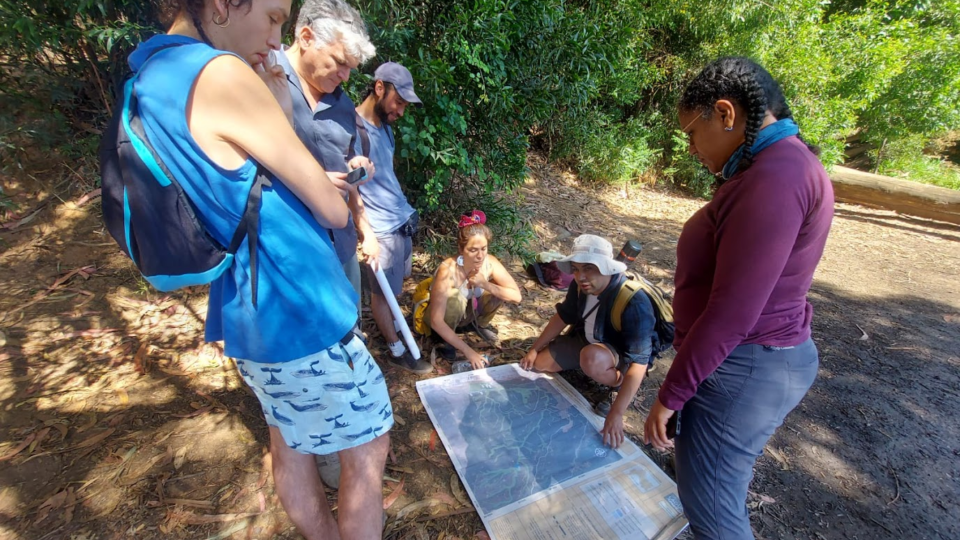Are LOCSS Citizen Scientists Accurately Measuring Lake Levels?
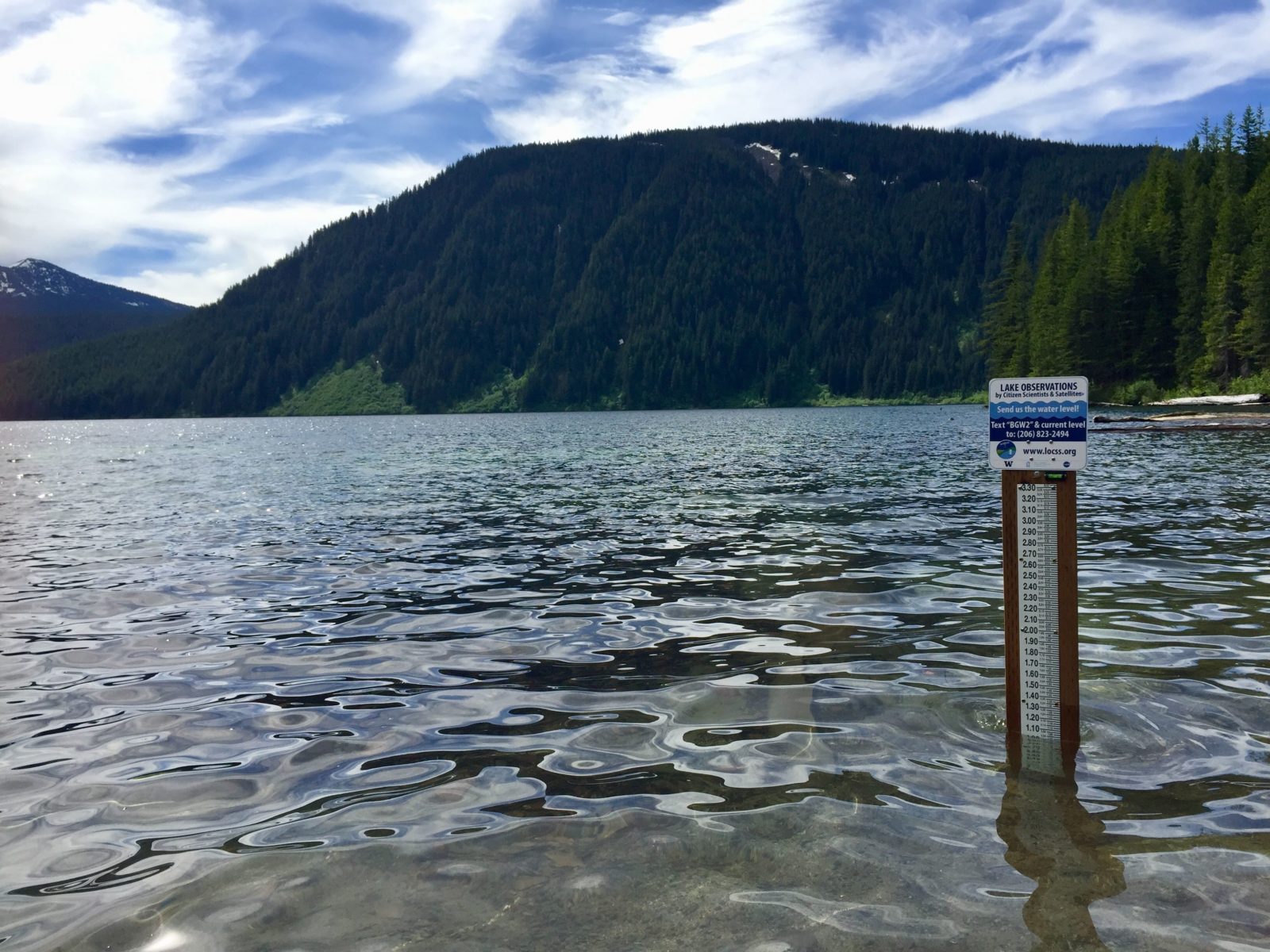 Gauge in Walupt Lake, WA
Gauge in Walupt Lake, WA
LOCSS relies upon our dedicated citizen scientists to get the data we need to better understand our study lakes. One concern some might have with any citizen science project is whether the data collected by ‘non-scientists’ is accurate. To address this concern and set aside any doubts about our data’s accuracy, we worked to validate our lake level data. To do this, we compared measurements reported by citizen scientists with lake level measurements generated by devices called pressure transducers. We installed Solinst Levellogger Junior Edge pressure transducers (pictured below) on 14 gauges North Carolina, 7 gauges in Washington, and 12 gauges in Illinois. The pressure transducers recorded measurements every 15 minutes for periods of 6-10 months. The pressure transducer data and citizen science data were then matched by date and time, and compared to determine accuracy.
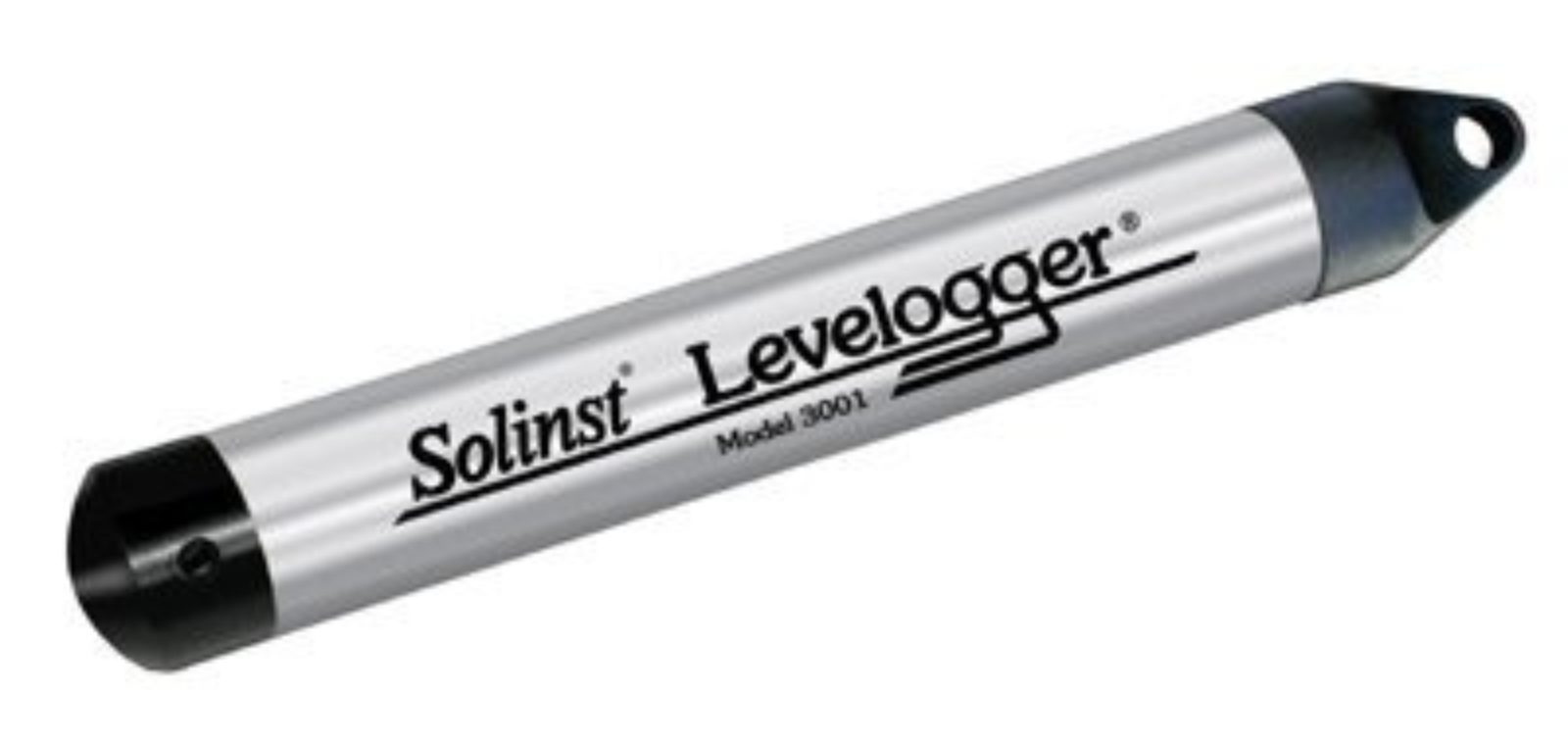 Solinst Levellogers were installed in lakes in NC, WA, and IL
Solinst Levellogers were installed in lakes in NC, WA, and IL
When comparing the 2,702 corresponding lake level measurements made by citizen scientists and pressure transducer measurements, we can see that the measurements by citizen scientists are highly accurate, with a mean error of just 1.6 cm (less than 3/4"). The measurement error of the pressure transducers themselves is 0.8 cm. This high accuracy can also be seen visually in the plot below. On this graph, each dot represents a measurement submitted by a citizen scientist and the corresponding measurement by the levellogger. The closer the dot is to the blue line that runs diagonally, the more accurate the citizen scientist’s measurement was.
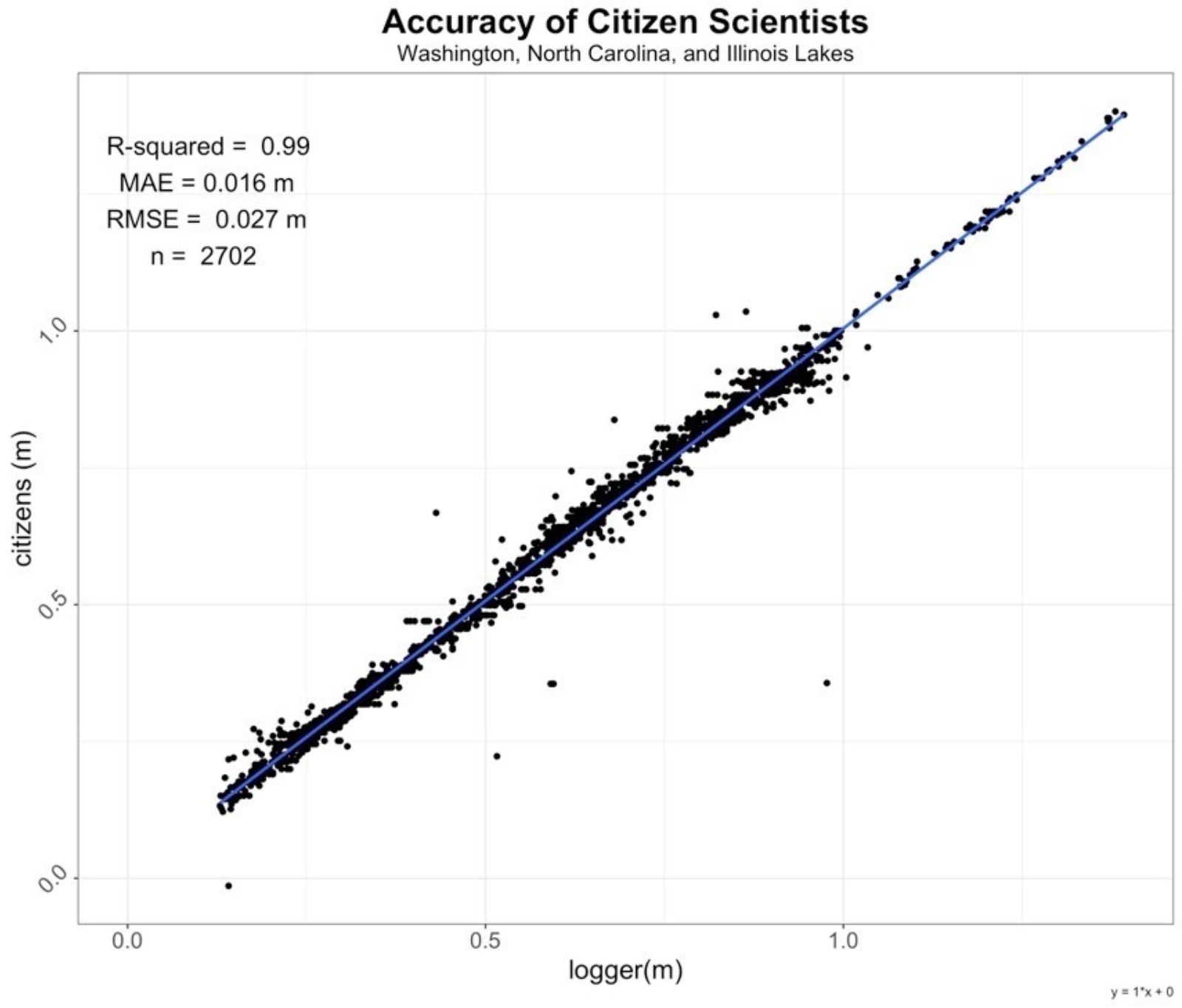 A scatterplot depicting the accuracy of citizen science measurements as compared to data collected by pressure transducers.
A scatterplot depicting the accuracy of citizen science measurements as compared to data collected by pressure transducers.
You can see several outliers in the citizen science data, and we attribute most of these to data entry error. An example of this would be accidentally texting a lake level of 2.90 feet instead of 1.90 feet due to the proximity of the keys on the phone.
These results show that our LOCSS citizen scientists can accurately monitor the change in lake level over time, with the citizen science data being nearly as accurate as the pressure transducer lake level data. And these results are similar to what we found when we tested the accuracy of citizen science data on North Carolina lakes during the early stages of our project. Great job everyone! Keep up the good work!
LOCSS News
We share stories about the lakes in our study, our partners and volunteer citizen scientists, as well as interesting results from our research.


